Lamp Guitar Amplification - The Paradox of Trend Durability
The epidemic of interest in tube guitar amplification has not dreamed of even the most eminent High End brands using tube systems. The incomparable sales volumes, at the high cost and rapidly aging technology, amid the dynamic development of guitar processors and various emulators are amazing. The “lamp trend” in the guitar sound is held from the moment the first electric guitars appeared until the present moment, and interest in such equipment is unlikely to dry up in the next 10 years.

Despite the abundance of digital tube sound emulators, low cost semiconductor amplifiers and combos designed to always and forever push out of the music world - this is “retrograde, decadent, semi-religious lamp obscurantism”, guitarists continue to use “warm” tube amplification. It is the lamp “heads” and “combos” that are considered true-sound, it is the tube top models of leading manufacturers that fall into the riders of rock stars, it is the “lamp” that remains the dream of teenagers who bought an electric guitar yesterday.
')
The most interesting question is why? What “magic” attracts guitarists to outdated technology and allows manufacturers to sell thousands of seemingly non-profitable, expensive, heavy, not too functional, less reliable tube amplifiers ? The paradox with the longevity of this trend is best viewed in several aspects: the history of guitar equipment, the characteristics of performance, the management of this equipment and, of course, marketing. The latter aspect is expressed to a much lesser extent than in the Hi-Fi and High End equipment.
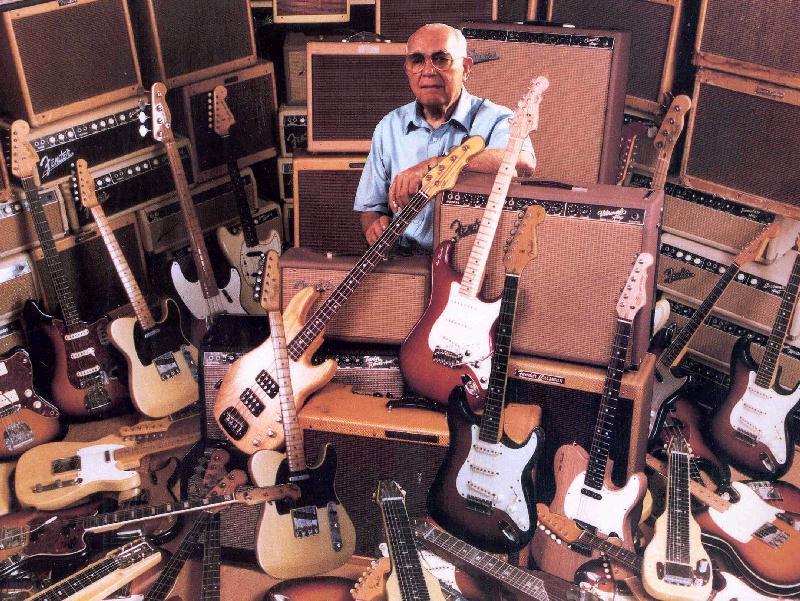
The first guitar amplifiers began to be made even before the first electric guitars “pans” were launched in 1931. These instruments were designed to amplify acoustic and resonant guitars. Quite naturally, these amplifiers were tube. Mass success came to the guitar equipment in the 50s with the birth of rock and roll. Guitar amplifiers of this period were built almost on the same principles and did not differ significantly from their ancestors from the 20s - 30s. Probably, the guitar guitar amplification would have sunk into oblivion with the advent of transistors, if not for the efforts of Leo Fender and other inventors who, just in the 50s, supplied country-n-western musicians and surf teams.
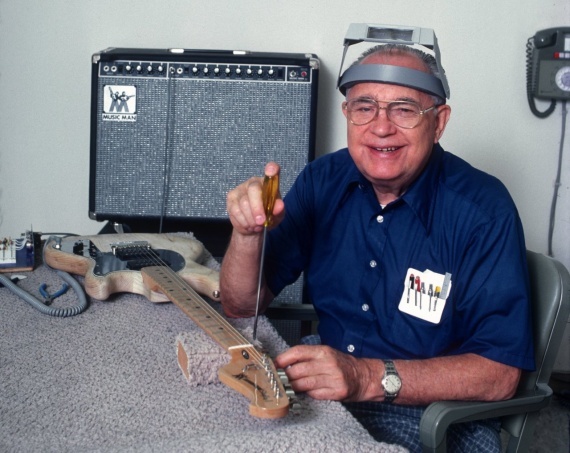

Sophisticated experimental experimenters, such as Dick Dale, who used these amplifiers and were looking for a new sound, quickly realized that by overloading the preamp one could get very musical and harmonious distortions. So there was an overload, the very juicy, distorted sound that guitarists use today in thousands of different variations. The idea of overwhelmed sound and the rapidly growing popularity of rock music, where this sound was claimed as an expressive tool, ensured the demand for guitar amplifiers . The latter, up to the beginning of the 70s, were almost always created on the basis of lamps.
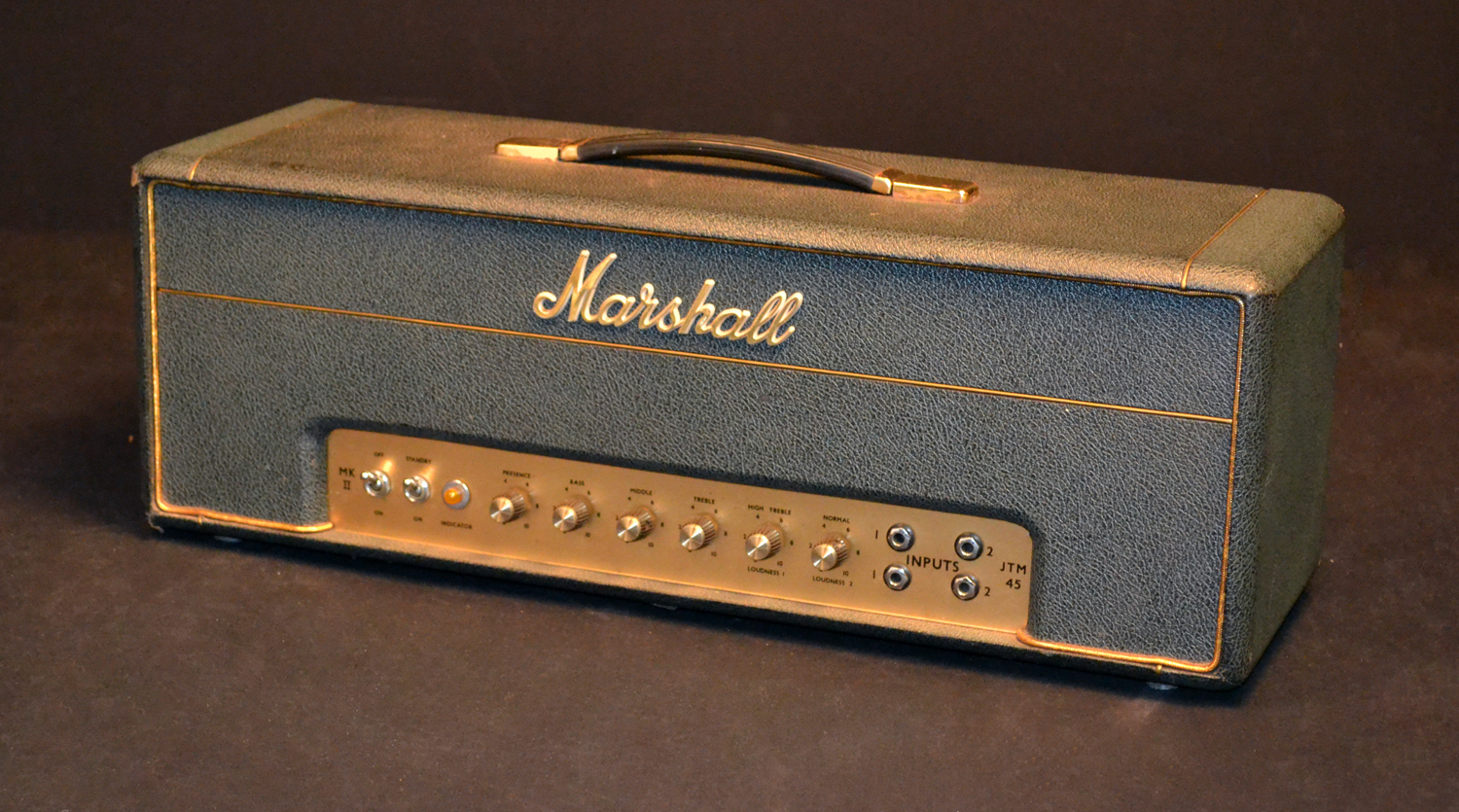
Already from the beginning of the 60s, the first serial transistor amplifiers and effects appear, but, due to the wide prevalence of lamp technology, they are not popular. Even despite the episodic use of transistor effects by stars of that time (Marty Robbins in “Don't Worry” and Keith Richards in (I Can't Get No) Satisfaction), the authority of performers using fuzz from Gibson does not cause a stir among musicians.

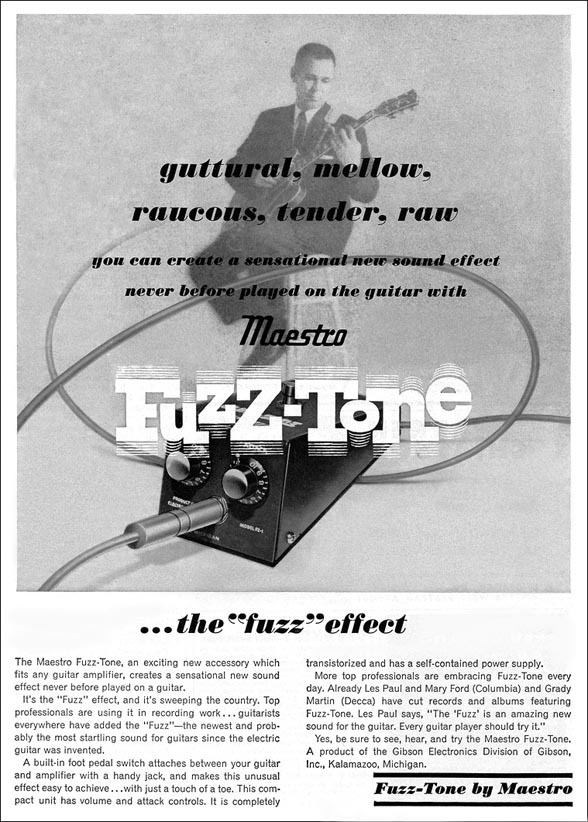

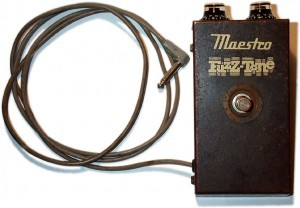
It should be noted that the pioneers of rock and roll in the 50s - 60s most likely did not think about the nuances of circuit design, the presence of even harmonics, the disadvantages or advantages of tube sound (there was no other one). They just played music on the equipment that existed in their era. At the same time, considering the youth of the electric guitar as a musical instrument, the school was formed: the musicians developed methods of sound production and playing technique, taking into account the type of amplification existing at that time and the effects that could be extracted from it.
The attempt of producers to interest musicians in more technological and cheap transistor systems in the 70s was only partially successful. Rock music in this period became one of the most popular genres in the world, which sharply increased the number of musicians, and, accordingly, provoked the need for mass, inexpensive and technological equipment. Transistor devices became more and more popular among novice guitarists, but as soon as the performing level and sound requirements grew, the musicians switched to the “lamp”. It can be said that almost the same situation remains to this day.

Due to the high adaptability of semiconductor circuits and the lack of a number of deficiencies inherent in the lamp circuit design, the engineers were seized by the idea of creating a transistor guitar amplifier with the advantages of a tube amplifier. Most of these attempts did not lead to success. As in the case of home audio equipment, a monstrous reputation has developed in the early stages of developing transistor guitar amplifiers back in the 70s.

Practically all the musicians who have heard semiconductor combos and “heads”, especially of the early period, note the extremely “hard”, “dry”, in a word, unpleasant sound, the lack of customization capabilities for lamp instruments. All this was due to the limited dynamic range and the appearance of unwanted (not musical, not euphonic) harmonic distortion in the guitar sound.
Operation of the guitar amplifier involves working with or near the maximum volume levels. So, for many transistor amplifiers at such loudness levels, even now a sudden short transition to amplitude limiting and almost instantaneous attenuation is characteristic, which at a wide frequency range (not always good for instrumentation equipment) generates a so-called "Shooting" or "spitting" sound with the beginning of the attack on each subsequent sound.
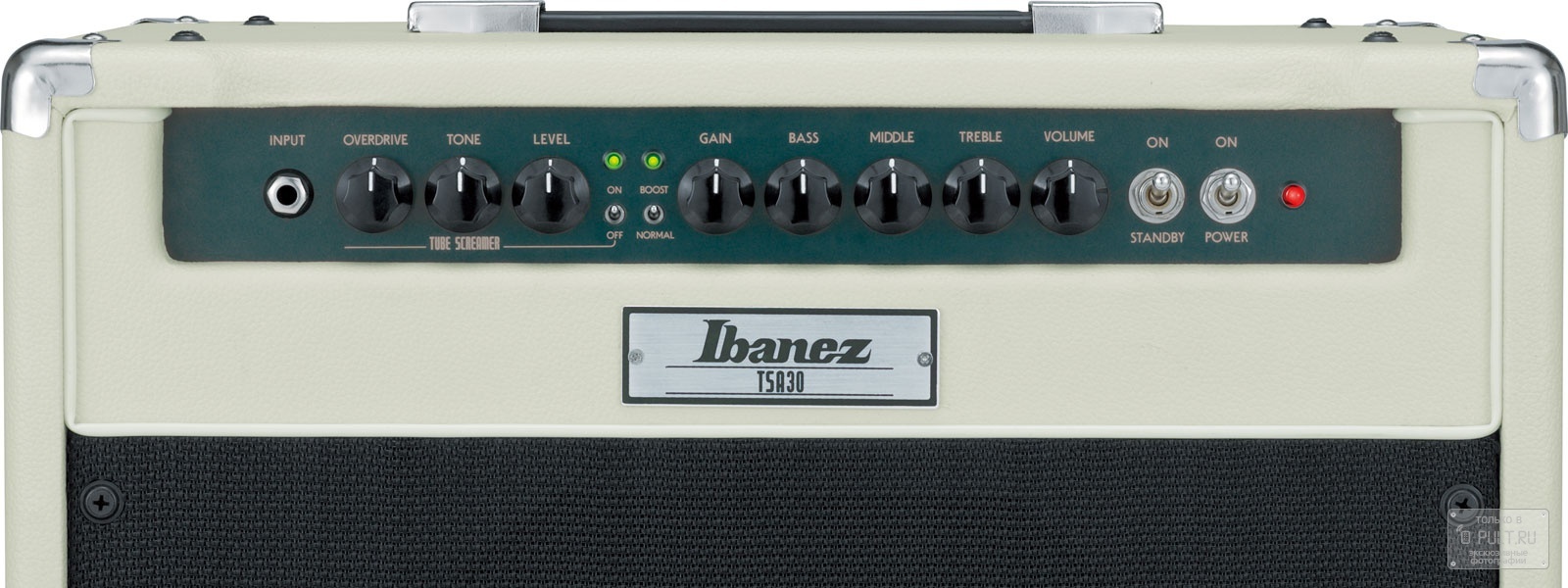
A long stay in the zone of amplitude limitation gave a very dirty, not “musically” distorted overload. These features do not allow you to get the right, from the point of view of many musicians, picking. The sharp amplitude limitation has become popular only in some heavy styles of the 80s - 90s of the last century and is quite selective. So distortion with a clipping, "spitting" amplitude limitation successfully used such groups as SOD, Celtic Frost, Megadeath, Pearl Jam, Nirvana. It should be borne in mind that the sound in such cases was subjected to a well-designed equalization in order to preserve the “fat” and “dense” wide frequency range.
The opinion about the positive effect of low even harmonics in the sound of tube amplifiers, common among some High End supporters, is largely borrowed from guitarists. At the same time, even harmonic distortions in guitar equipment are traditionally and justifiably considered an advantage, in contrast to amplifiers for playing music, where this question is more than controversial. The “harmonicity” of these distortions is due to the fact that even harmonics musically correlate with the main tone, unlike odd ones.

The problem of transistor models of guitar equipment was the range of SOIs in which “non-musical” distortions abounded. Whereas lamp systems with a transformer output and with not a large number or lack of feedback saturate the sound, for the most part, with even harmonic distortion.
Intermodulation distortion is a serious problem for music reproducing equipment, but they are not considered a serious disadvantage of guitar amplifiers , at least in the “Gain” mode. On the contrary, the appearance of an intermodulation tone during the formation of the effect, according to musicians who use overload, enriches the sound and makes it possible to use it in the musical canvas created by the instrument.
Adherents of tube sound when tuning the tone-block and creating the sound they need are based on the frequency response of the amplifier. The circuitry of the Fender and Marshall tone masks, which has developed historically, has identified 2 of the most common frequency transfer concepts in tube guitar amplifiers. They allow you to get this or that predictable sound of an electric guitar necessary for a musician. Below are the frequency response curves typical for amplifiers of these companies with visually the same position of timbre regulators, kindly published by Vladimir Martynenko, in his material on tube and transistor circuitry of guitar amplifiers on guitar.ru.
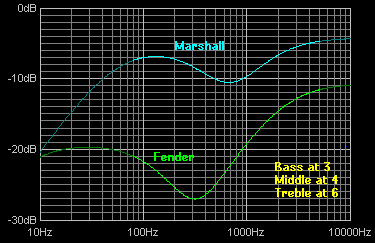
Digital emulators of modern guitar processors can fully or almost completely emulate tube sound. This fact is indisputable, in view of the modern level of development of digital systems and, perhaps, does not require extensive proof. At the same time, lamp systems retain a number of advantages that influence the choice in their favor.

These advantages include musicians:
Virtually all of the above advantages are partly objective, and at least they have a right to exist, and for many they become the determining factor.
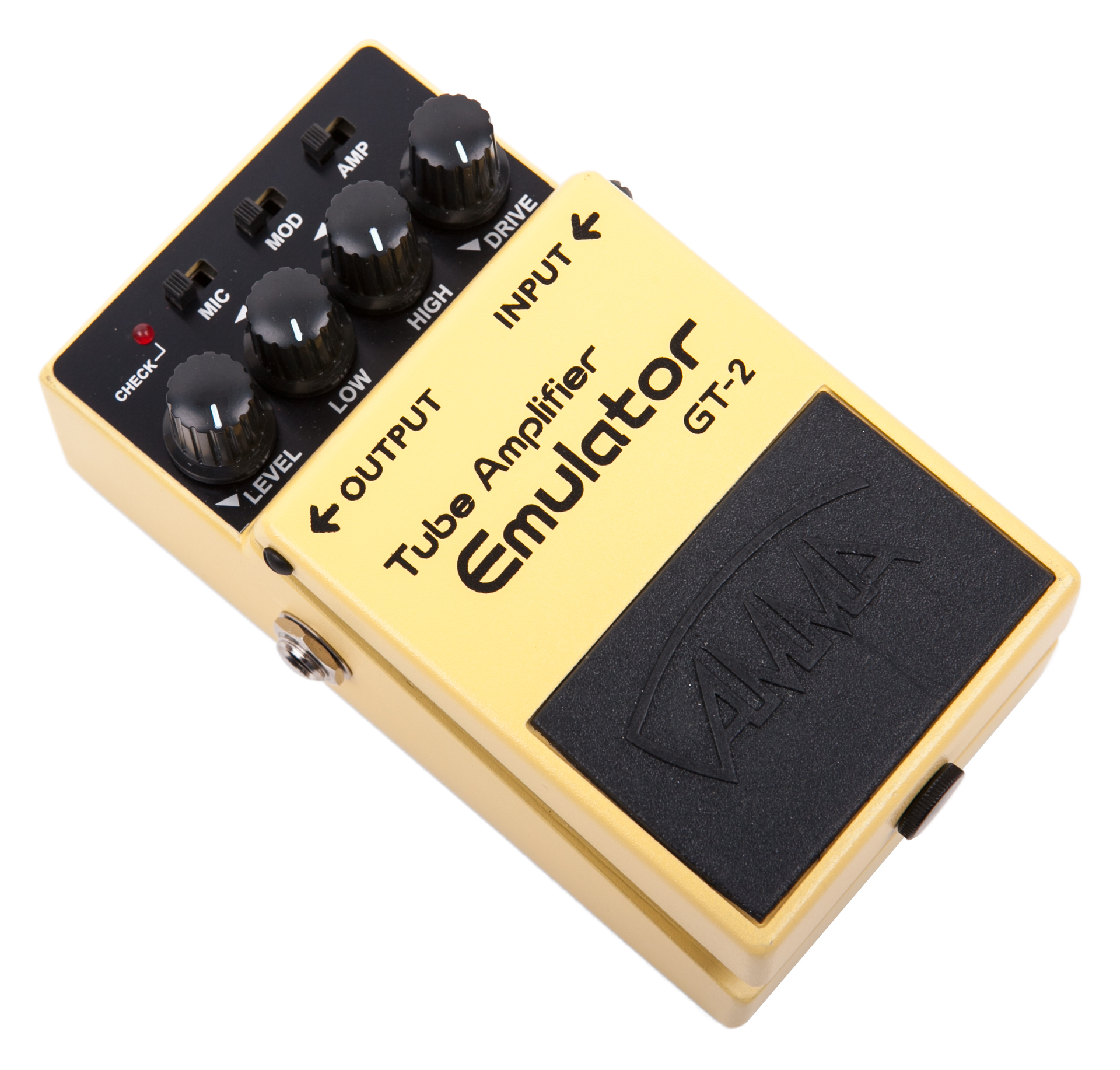
From the point of view of lamp followers, the Klonz project, launched by two Italian inventors Fabrizio Brencio and Andrea Feorini in 2015, is interesting. "Modeling tube amplifier" - developed by the inventors, is a kind of designer, which makes it possible to use any lamps that are widely used in guitar equipment, and several preamplification circuits.
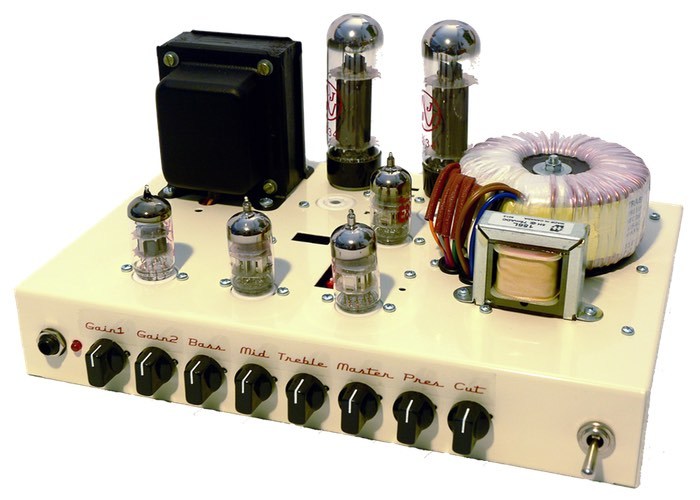
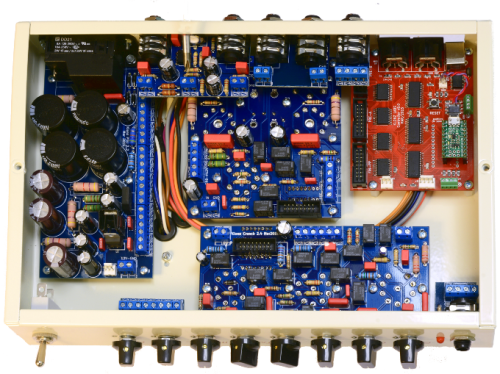
In this case, for the formation of the desired scheme does not require special knowledge in circuit design and soldering skills. A detailed manual explains how to simulate a particular sound, all device modules are connected using standard connectors. According to the authors of the project, Klonz should imitate the sound of any tube amplifier in the world.
There are also Nietzschean irrational arguments in favor of lamps, they say the lamps are alive, and the transistors are bad, and the figure is “dead”. We have to admit that some musicians, in terms of their “metaphysical” attitude to sound, can give odds to “truly believing” audiophiles. I note that you need to make a discount on the fact that creative people are not always inclined to think rationally, they can be forgiven.

For the latter, some manufacturers of guitar processors began to include in the design of the lamp in order to "revive" the dead digital sound. How much the last "innovation" changes the sound and solves the problem of the "dead" sound of research has not been met, but faith is a great thing, let a spark of creativity with the believers arrive. Let them believe, just to play well.

Despite the abundance of digital tube sound emulators, low cost semiconductor amplifiers and combos designed to always and forever push out of the music world - this is “retrograde, decadent, semi-religious lamp obscurantism”, guitarists continue to use “warm” tube amplification. It is the lamp “heads” and “combos” that are considered true-sound, it is the tube top models of leading manufacturers that fall into the riders of rock stars, it is the “lamp” that remains the dream of teenagers who bought an electric guitar yesterday.
')
The most interesting question is why? What “magic” attracts guitarists to outdated technology and allows manufacturers to sell thousands of seemingly non-profitable, expensive, heavy, not too functional, less reliable tube amplifiers ? The paradox with the longevity of this trend is best viewed in several aspects: the history of guitar equipment, the characteristics of performance, the management of this equipment and, of course, marketing. The latter aspect is expressed to a much lesser extent than in the Hi-Fi and High End equipment.
Trend roots

The first guitar amplifiers began to be made even before the first electric guitars “pans” were launched in 1931. These instruments were designed to amplify acoustic and resonant guitars. Quite naturally, these amplifiers were tube. Mass success came to the guitar equipment in the 50s with the birth of rock and roll. Guitar amplifiers of this period were built almost on the same principles and did not differ significantly from their ancestors from the 20s - 30s. Probably, the guitar guitar amplification would have sunk into oblivion with the advent of transistors, if not for the efforts of Leo Fender and other inventors who, just in the 50s, supplied country-n-western musicians and surf teams.


Sophisticated experimental experimenters, such as Dick Dale, who used these amplifiers and were looking for a new sound, quickly realized that by overloading the preamp one could get very musical and harmonious distortions. So there was an overload, the very juicy, distorted sound that guitarists use today in thousands of different variations. The idea of overwhelmed sound and the rapidly growing popularity of rock music, where this sound was claimed as an expressive tool, ensured the demand for guitar amplifiers . The latter, up to the beginning of the 70s, were almost always created on the basis of lamps.
Golden age

Already from the beginning of the 60s, the first serial transistor amplifiers and effects appear, but, due to the wide prevalence of lamp technology, they are not popular. Even despite the episodic use of transistor effects by stars of that time (Marty Robbins in “Don't Worry” and Keith Richards in (I Can't Get No) Satisfaction), the authority of performers using fuzz from Gibson does not cause a stir among musicians.




It should be noted that the pioneers of rock and roll in the 50s - 60s most likely did not think about the nuances of circuit design, the presence of even harmonics, the disadvantages or advantages of tube sound (there was no other one). They just played music on the equipment that existed in their era. At the same time, considering the youth of the electric guitar as a musical instrument, the school was formed: the musicians developed methods of sound production and playing technique, taking into account the type of amplification existing at that time and the effects that could be extracted from it.
Semiconductor competition
The attempt of producers to interest musicians in more technological and cheap transistor systems in the 70s was only partially successful. Rock music in this period became one of the most popular genres in the world, which sharply increased the number of musicians, and, accordingly, provoked the need for mass, inexpensive and technological equipment. Transistor devices became more and more popular among novice guitarists, but as soon as the performing level and sound requirements grew, the musicians switched to the “lamp”. It can be said that almost the same situation remains to this day.
If grandma has a “bolt”, then she is not a grandmother ...

Due to the high adaptability of semiconductor circuits and the lack of a number of deficiencies inherent in the lamp circuit design, the engineers were seized by the idea of creating a transistor guitar amplifier with the advantages of a tube amplifier. Most of these attempts did not lead to success. As in the case of home audio equipment, a monstrous reputation has developed in the early stages of developing transistor guitar amplifiers back in the 70s.

Practically all the musicians who have heard semiconductor combos and “heads”, especially of the early period, note the extremely “hard”, “dry”, in a word, unpleasant sound, the lack of customization capabilities for lamp instruments. All this was due to the limited dynamic range and the appearance of unwanted (not musical, not euphonic) harmonic distortion in the guitar sound.
Dynamic differences
Operation of the guitar amplifier involves working with or near the maximum volume levels. So, for many transistor amplifiers at such loudness levels, even now a sudden short transition to amplitude limiting and almost instantaneous attenuation is characteristic, which at a wide frequency range (not always good for instrumentation equipment) generates a so-called "Shooting" or "spitting" sound with the beginning of the attack on each subsequent sound.

A long stay in the zone of amplitude limitation gave a very dirty, not “musically” distorted overload. These features do not allow you to get the right, from the point of view of many musicians, picking. The sharp amplitude limitation has become popular only in some heavy styles of the 80s - 90s of the last century and is quite selective. So distortion with a clipping, "spitting" amplitude limitation successfully used such groups as SOD, Celtic Frost, Megadeath, Pearl Jam, Nirvana. It should be borne in mind that the sound in such cases was subjected to a well-designed equalization in order to preserve the “fat” and “dense” wide frequency range.
Even harmonics saga
The opinion about the positive effect of low even harmonics in the sound of tube amplifiers, common among some High End supporters, is largely borrowed from guitarists. At the same time, even harmonic distortions in guitar equipment are traditionally and justifiably considered an advantage, in contrast to amplifiers for playing music, where this question is more than controversial. The “harmonicity” of these distortions is due to the fact that even harmonics musically correlate with the main tone, unlike odd ones.

The problem of transistor models of guitar equipment was the range of SOIs in which “non-musical” distortions abounded. Whereas lamp systems with a transformer output and with not a large number or lack of feedback saturate the sound, for the most part, with even harmonic distortion.
Intermodulation
Intermodulation distortion is a serious problem for music reproducing equipment, but they are not considered a serious disadvantage of guitar amplifiers , at least in the “Gain” mode. On the contrary, the appearance of an intermodulation tone during the formation of the effect, according to musicians who use overload, enriches the sound and makes it possible to use it in the musical canvas created by the instrument.
Dominant frequency transmission concepts
Adherents of tube sound when tuning the tone-block and creating the sound they need are based on the frequency response of the amplifier. The circuitry of the Fender and Marshall tone masks, which has developed historically, has identified 2 of the most common frequency transfer concepts in tube guitar amplifiers. They allow you to get this or that predictable sound of an electric guitar necessary for a musician. Below are the frequency response curves typical for amplifiers of these companies with visually the same position of timbre regulators, kindly published by Vladimir Martynenko, in his material on tube and transistor circuitry of guitar amplifiers on guitar.ru.

Digital emulation of the "warm" lamp
Digital emulators of modern guitar processors can fully or almost completely emulate tube sound. This fact is indisputable, in view of the modern level of development of digital systems and, perhaps, does not require extensive proof. At the same time, lamp systems retain a number of advantages that influence the choice in their favor.

These advantages include musicians:
- predictable result (there is no need for a long selection of components of the path, everything is simple: guitar + head + office, guitar + combo);
- familiar tuning algorithm;
- ease of creating the desired sound (the amplifier just sounds the way it should sound and does not require a long adjustment of parameters to get the "right" sound ");
- digital systems may differ in sound, in some nuances of sound extraction, the sound is similar, but “not the same”, the arguments of the following plan: “when I make a flageolet, there was an echo, but here it isn’t and everything sounds differently”.
Virtually all of the above advantages are partly objective, and at least they have a right to exist, and for many they become the determining factor.

New wave - lamp constructor
From the point of view of lamp followers, the Klonz project, launched by two Italian inventors Fabrizio Brencio and Andrea Feorini in 2015, is interesting. "Modeling tube amplifier" - developed by the inventors, is a kind of designer, which makes it possible to use any lamps that are widely used in guitar equipment, and several preamplification circuits.


In this case, for the formation of the desired scheme does not require special knowledge in circuit design and soldering skills. A detailed manual explains how to simulate a particular sound, all device modules are connected using standard connectors. According to the authors of the project, Klonz should imitate the sound of any tube amplifier in the world.
Lampaholics and marketing– “live” and “dead” sound
There are also Nietzschean irrational arguments in favor of lamps, they say the lamps are alive, and the transistors are bad, and the figure is “dead”. We have to admit that some musicians, in terms of their “metaphysical” attitude to sound, can give odds to “truly believing” audiophiles. I note that you need to make a discount on the fact that creative people are not always inclined to think rationally, they can be forgiven.

For the latter, some manufacturers of guitar processors began to include in the design of the lamp in order to "revive" the dead digital sound. How much the last "innovation" changes the sound and solves the problem of the "dead" sound of research has not been met, but faith is a great thing, let a spark of creativity with the believers arrive. Let them believe, just to play well.
Source: https://habr.com/ru/post/399139/
All Articles